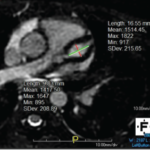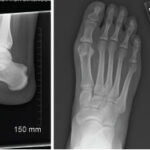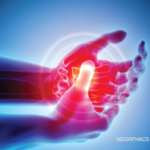Laura Coates, MBChB, MRCP, PhD, described & compared the intricacies of different outcome measures, as well as implications for clinical practice & trials, for patients with psoriatic arthritis.

Subcategories:Axial SpondyloarthritisGout and Crystalline ArthritisGuidelinesMyositisOsteoarthritis and Bone DisordersOther Rheumatic ConditionsPain SyndromesPediatric ConditionsPsoriatic ArthritisRheumatoid ArthritisSjögren’s DiseaseSoft Tissue PainSystemic Lupus ErythematosusSystemic SclerosisVasculitis

Laura Coates, MBChB, MRCP, PhD, described & compared the intricacies of different outcome measures, as well as implications for clinical practice & trials, for patients with psoriatic arthritis.
Reuters Staff |
(Reuters)—Pfizer Inc. said on June 16 its oral rheumatoid arthritis (RA) drug Xeljanz (tofacitinib) reduced death or respiratory failure in hospitalized COVID-19 patients with pneumonia in Brazil, meeting the study’s main goal. Results of the study, which tested the drug in 289 hospitalized adult patients with the respiratory illness caused by the coronavirus, were published…
Lisa Rapaport |
(Reuters Health)—Young and middle-aged adults with polymyositis-dermatomyositis are more likely to have arrhythmias in general, and supraventricular arrhythmias in particular, than matched controls without these rare rheumatic conditions, a U.S. study suggests.1 Researchers examined retrospective data on adults hospitalized between 2016 and 2018, including 32,085 patients with polymyositis-dermatomyositis and 320,850 age-matched controls. Overall, both women…
Marilynn Larkin |
NEW YORK (Reuters Health)—Rituximab seemed to be a safe and effective treatment for systemic sclerosis (SSc) in a placebo-controlled validation trial in Japan.1 “A number of studies have examined B-cell depletion therapy for systemic sclerosis, and many of them have suggested that [this] is effective in treating systemic sclerosis,” Ayumi Yoshizaki, MD, tells Reuters Health…
Marilynn Larkin |
NEW YORK (Reuters Health)—Non-surgical care for knee osteoarthritis (OA) is uncommon among older adults, especially in regions of the U.S. where total knee arthroplasty rates are high, a large retrospective analysis shows.1 “As rheumatologists, we often think of knee arthroplasty as the last resort, after patients have tried and failed more conservative treatments, such as…

Tryphina Adel Mikhail & Mary Bratovich Toth, MD |
In September 2019, a previously healthy, 9-year-old white girl presented to the emergency department following two months of sinusitis and unexplained fever responsive to ibuprofen. She presented with anorexia; a 9 lb. weight loss; intermittent, nonbilious, nonbloody emesis; and occasional epistaxis with digital manipulation of the nose. Six weeks prior to admission, she had presented to…

As the novel coronavirus that causes COVID-19 spreads across the globe, innovative thinking is needed more than ever to counter the devastating effects on the physical and socioeconomic health of individuals and communities. Innovations in healthcare delivery not yet fully realized prior to the pandemic, such as the adoption of telehealth, are moving to the…

Rebecca Lindsey Weiner, DO, & Ann K. Rosenthal, MD, FACP |
Gout is the most common type of inflammatory arthritis in adults, and it typically occurs in men over the age of 50. When gout presents in younger patients or in women, this should warrant consideration of secondary causes. We describe an unusual genetic cause of tophaceous gout in a young, premenopausal woman. Case Report In…

Alyxandra Soloway, MD, & Stephen Soloway, MD, FACP, FACR |
Immunoglobulin G4-related disease (IgG4-related disease) is relatively rare, although with greater recognition it is becoming more frequently diagnosed. Some of the more common presentations of the disease include aortitis, cholangitis, autoimmune pancreatitis, sclerosing sialadenitis, orbital disease with proptosis and subacute mass development in the affected organ.1 It has protean manifestations and is diagnosed by classic…

In early June, the ACR released an updated guideline on the management of rheumatoid arthritis, which includes new recommendations for specific high-risk groups.1 The guideline includes 44 recommendations—seven of which are strong and 37 conditional. It underscores the role of methotrexate as a cornerstone therapy and emphasizes minimizing glucocorticoids, when possible. Guideline Development Process At…